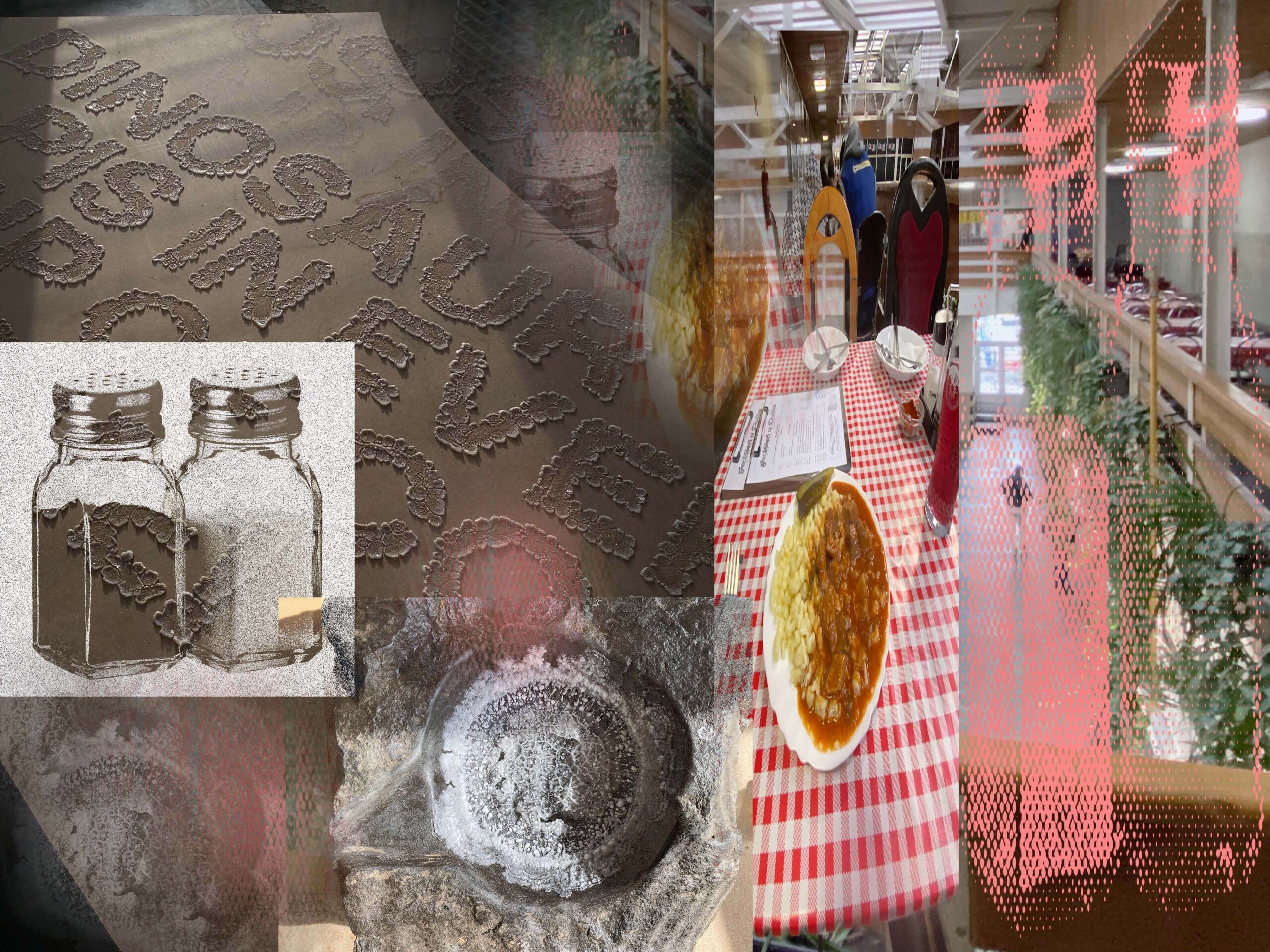
In Duško’s Canteen
Like, I’m gonna lose it. Did you see that? Again – Duško’s dad was here. He got me all messy.
( … )
What? You don’t know who Duško’s dad is? He’s that uncle who always sits at the counter.
( … )
Yeah, his name’s Duško too. Well, actually Dušan, but everyone here just calls him Duši bácsi[1].
( … )
I know, right? Every newcomer gets confused at first. Even Duško’s son – I mean Duši bácsi’s grandson – is named Duško. But they call him by his full name, Dušan. So here’s how it goes: we’ve got old Duši bácsi, the senior boss; Duško, who owns this gastronomic establishment – our home and workplace – and his son Dušan, the guy always running around with crates of ready-made meals for delivery and supplies for the kitchen.
( … )
And yeah, old Duši bácsi usually sits at the counter. But once a week, on Fridays, he sits here, by the entrance. Fridays a young apprentice goes to the tailor’s workshop next door – he has an eye for young people, that’s for sure.
( … )
So Fridays at eleven are not my favorite. Duši bácsi shakes like a stale Easter aspic – I can be sure that at least once a month I get properly splattered. Today it was lángos[2], so voilà: I’m sticky with ketchup all over.
( … )
But it has its perks, of course. Zuzka, uuuu, the head waitress, always wipes us so gently…
( … )
Hey – do you speak Hungarian? No? I’ll teach you. If you stick around here for a couple of years like me, you’ll need it. Tonko’s jokes are worth it!
( … )
Tonko? He’s that dangerous-looking waiter, there, see? Toothless, in his sixties, always on the phone with his fiancée – look, even now, phone in his left hand, three plates in the right. What a guy!
( … )
Tomorrow? No, not tomorrow – on Saturdays and Sundays no one’s here, not even him. We get some peace. Not much happens, but what does is interesting. Majko the barber, over there on the left, comes with a group of people to his barber shop – mostly young women, they put on music, stay for hours. Ivan downstairs in Fast Food prepares baguettes for Monday and stacks tiny vodka bottles in the fridge. Sometimes Dávid pops in from that tiny space across the hall, next to MenStyle.
( … )
Yes, that one. He’s got a strict colleague, Martina. She grows things, and he makes exhibitions of stuff people call art.
( … )
Yeah, art is… stuff – but not for using – like us – it supposedly has some special value, some kind of magic.
( … )
Maybe we, the salt and pepper shakers, could be part of such art too. Or make some new ones ourselves!
( … )
… I’d love to do something about salt, you know… besides me, probably only seawater knows it better.
( … )
Well, because I care. What would a salt shaker be without salt, for fuck’s sake. Like a pepper shaker without pepper… an empty bottle, a cave, nothing.
( … )
What? Salt is amazing! One moment it’s in the soup, the next it’s in a body – cat’s or Duši bácsi’s. Then it lies underground, looking like a rock, resting. Then it travels by truck, in bags, in boxes. It can sit there for ages – bamboozillions of years – and then suddenly it ends up here, on our table, inside me.
( … )
Exactly.
( … )
Have you met Vierka yet?
( … )
You know, that older panika[3] with the bike who takes half a day to push herself up here. She says her great-grandfather Lóránt was the last salt guardian in Novohrad.
( … )
I imagine him in armor, wrapped in plastic tablecloths or clad in wood like the paneling up there above the bar – protecting a pile of salt with his own body.
( … )
No. Not far from here, past Lučenec, in Halič. There used to be a Salt Office there. Can you imagine – they used to guard salt like a treasure.
(…)
Exactly! Now road workers spread it on icy streets, and farmer Csilla curses because it’s salting her field and makes it harder to grow wheat. Salt – once a treasure, now feels like a threat. And me? I sit here, sticky with ketchup, waiting for Zuzka to come wipe me down and refill me with this interesting stuff. Duši bácsi just used the last grain.
Alright,
but what does a saltshaker from Lučenec have to do with the salt in Terschelling’s soil?
The idea for this short story was born in the spring of 2025, during preparations for the May residency that preceded the presentation of the work at the Oerol Festival on the island of Terschelling. The invitation to this event came as early as September 2024, as part of the international research-art project Transitioning LANDscapes. Shortly after we agreed to take part, I was given an assignment: to reflect on the increasing salinity of groundwater and agricultural soils.
Since the countryside and its role in food production is one of the key aspects of my artistic research, this assignment was a naturally welcome challenge. Time was short, so I decided to look for a phenomenon or a story that could connect my home – the south of central Slovakia – with the north of the Netherlands.
This is how a model of the gate of the former Salt Office (1701–1835) in Halič found its way to the center of Guardians of the Savory. This office was once a branch of the Hungarian (later Austro-Hungarian) salt monopoly and ensured the distribution of salt—then a rare and strictly guarded resource—to all the counties of the monarchy.
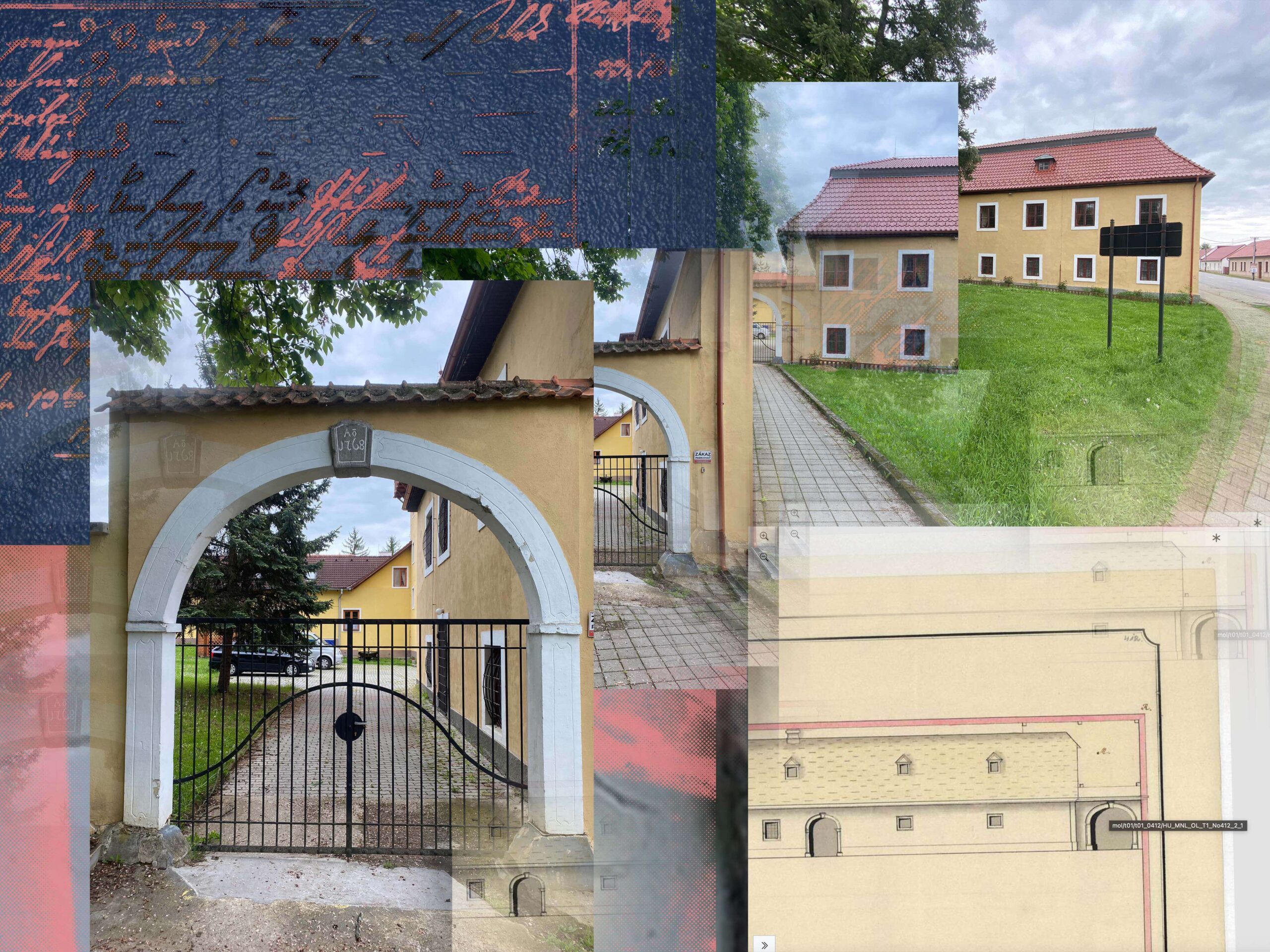
Today we see salt differently. On Terschelling—and in many places around the planet—it is no longer a treasure, but a symptom. It is an index of one of the biggest skeletons in the closet of the Anthropocene: climate change. Among other things, it manifests in rising sea levels and increasing salinity of water and soils. According to research, more than 20% of the world’s cultivated landscapes are threatened by this phenomenon.
It is therefore inspiring that in countries where this issue is most acute—such as the Netherlands—active efforts are being made to find adaptation strategies. We know for certain that increased salinity inhibits the growth of many conventional crops, but there are also plants that thrive in salty environments—halophytes. Projects such as De Zilte Smaak (The Salty Taste) study them right on Terschelling: they cultivate glasswort (Salicornia europaea), sea aster, and search for salt-tolerant varieties of potatoes and beets. Crucially, these crops end up on plates in local restaurants—growing, cooking, and eating thus become ways of searching for healing mechanisms together with the landscape.
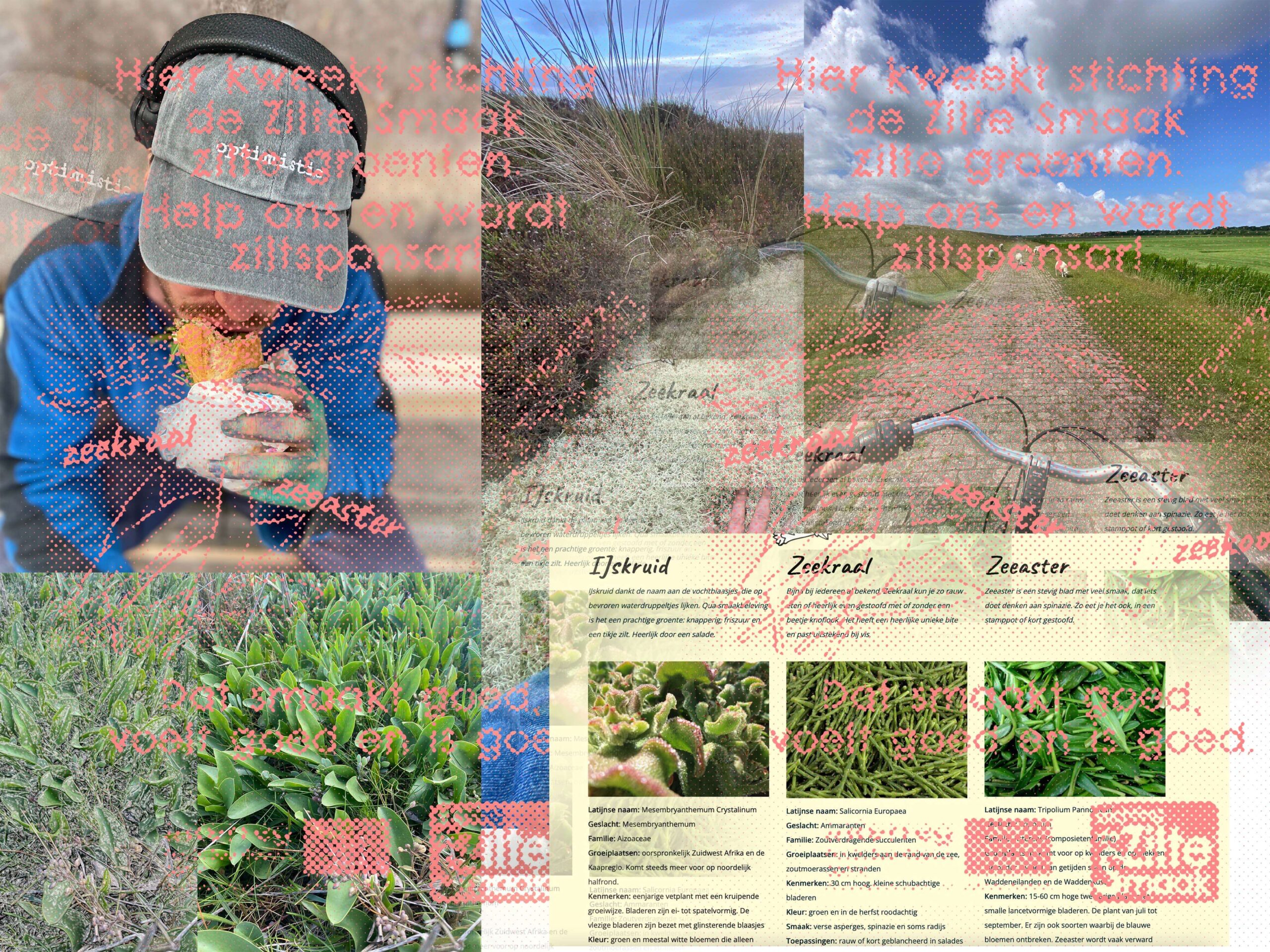
What was once a protected treasure now feels like a cheap, anonymous commodity – piled high on store shelves, without a story, without an origin. Or we scatter it on winter roads. The runoff of salt affects waterways and soils. What the sea or groundwater doesn’t salinize for us, we end up salting ourselves. Salt is no longer over gold.
But philosopher Lukáš Likavčan invites us to “return to a naïve trust in reality’s ability to offer us clues, instructions, and hints.[4]” Through this lens, we can see salt as a trace or a message from the planet – a whisper, a warning, perhaps even a plea.
Guardians of the Savory connects the salt-soaked soil of Terschelling with Novohrad. The gate becomes a symbolic threshold – a tear in space-time. Through it, we travel more than two hundred years into the past to notice how a once-guarded treasure has become a threat. The capitalist reductionism that sees more-than-human ecosystems merely as resources brings us to a point where we must once again reconsider how to co-exist with the world.
Final thoughts
The gate includes two artistically articulated façade surfaces. The frontal design, which I created, is covered with a set of fictional salty tags, graffiti, and inscriptions. Some we understand, others we do not. Their salty materiality is a reminder of the thin boundary between life and non-life, between the organic and the inorganic. The salt crystals on the surface of the reliefs change subtly every day—they absorb nighttime atmospheric moisture, move a few millimeters downward in liquid form across the wooden model of the gate, and harden again during the day. They shift, draw, sculpt.
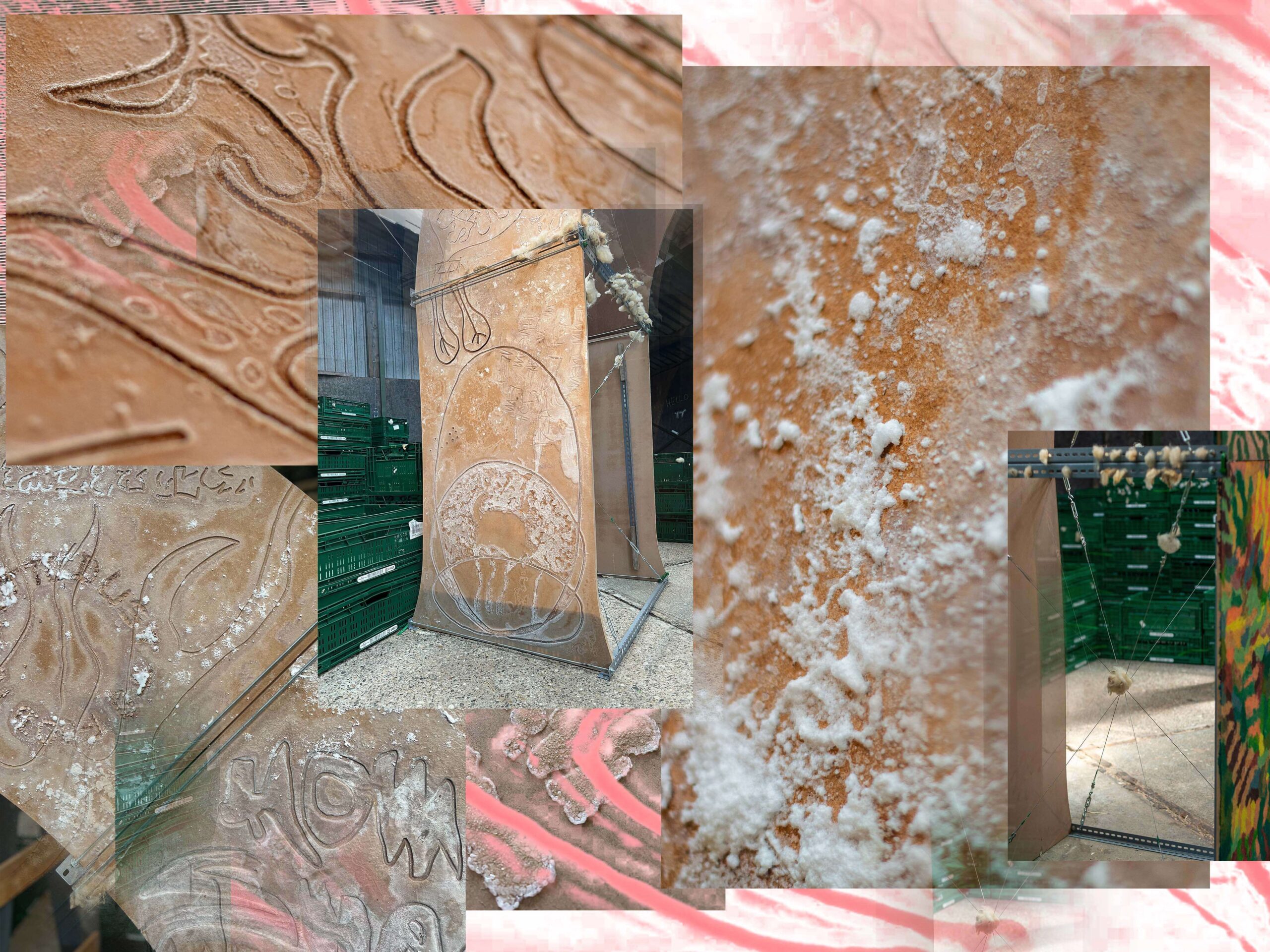
The other, seemingly reverse side of the gate was created by guest artist Erik Pánči, whose work is based on the hypothesis that space is not a fundamental given, but a secondary, emergent phenomenon of non-linearly oscillating time. Time is not considered a simple vector or homogeneous flow, but a complex, multidimensional entity composed of resonances, tensions, and interferences. What we perceive as reality, according to this concept, is a harmonious consonance of multiple speeds of temporal flow. In this way, we emphasize the geographical and temporal connection between two distant parts of Europe.
For the duration of the festival, it is important that both sides appear as relief sculptures unfolding in time—they are not static results, but open processes in which colors and textures merge into a rhythmic perception. Instead of depicting, they occur. They are not images of the world—they are the unfolding of the world itself.An essential part of the work is also its placement within the environment of the De Zeekraal farm, operated by the Bakker family. It is a space of sounds, scents, labor, fatigue, and hope. A place of understanding, care, but also of dominance. A place of mutual dependencies.
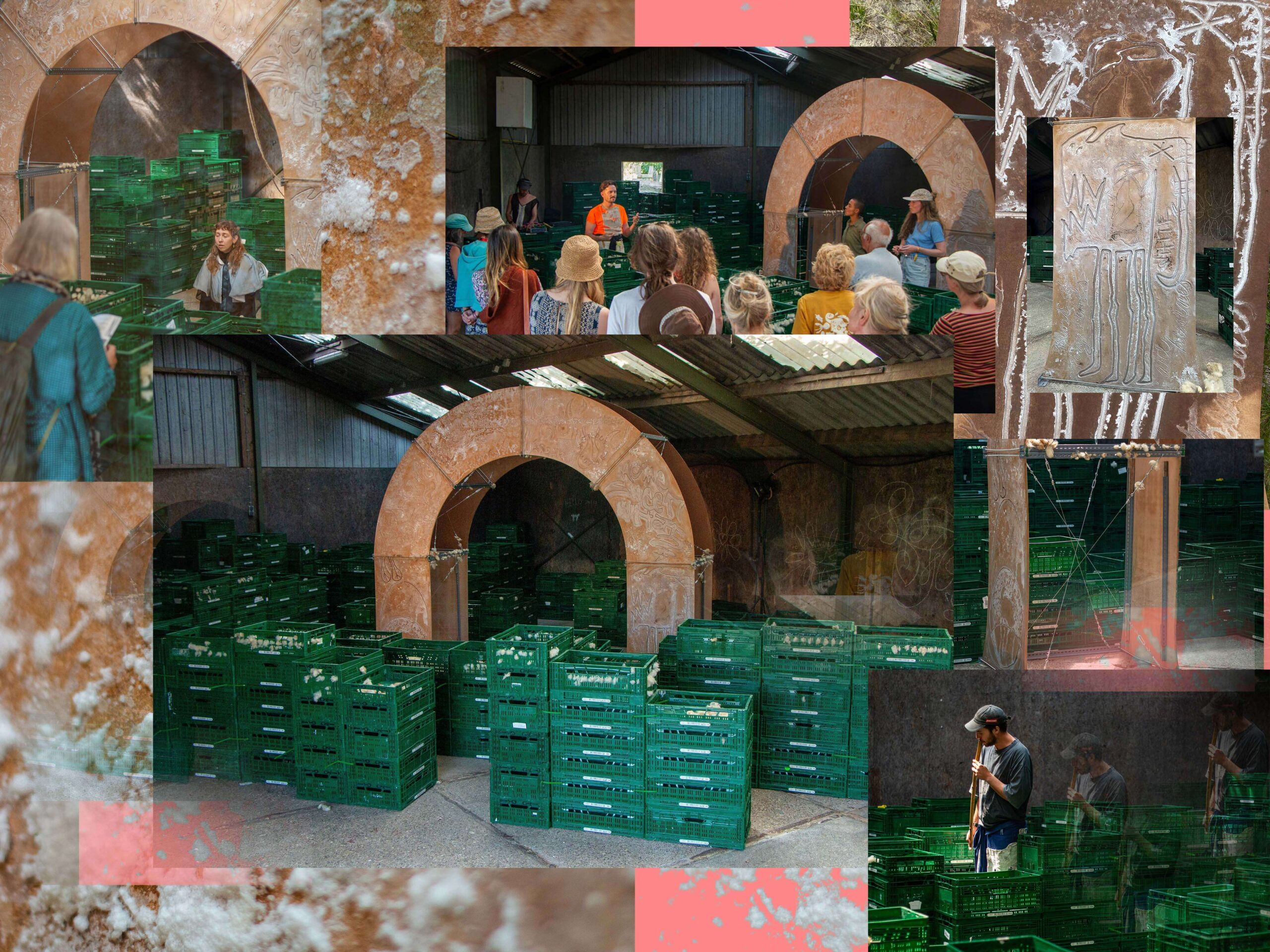
Into this environment, besides the gate, we enter through a hint of a French formal garden—a labyrinth made from plastic crates instead of boxwood. The crates—perfect pawns of late global capitalism—are designed to fit beautifully on a pallet. Pallets are designed to fit perfectly into containers. And containers into massive ships. A matryoshka of trade, extraction, and anthropocentric organization of the world.
At the center of the labyrinth stands the aforementioned gate—a portal, a liminal space through which visitors could move between imagined temporal and geographical spaces. Between Terschelling and Novohrad. Between the 18th and 21st centuries. They could experience a small miracle. We need them, however small. Because—as the philosopher Lukáš Likavčan, cited above, asks in a conversation with the artist András Cséfalvay: How are we to live in a world, on a planet, that does not care about us?[5]
[1] bácsi – “uncle” in Hungarian, used for elderly men in Slovak as well
[2] lángos – a deep fried leavened dough, the Central European “pizza”
[3] older lady in a south-slovakian roma-hungarian dialect
[4] Lukáš Likavčan – Earthlings, curatorial text for Fotograf festival 11, Prague, (2021)
[5] András Cséfalvay – Interfacing with the Planet. In conversation with Lukáš Likavčan, Shape of Future Earth, VŠVU/AFAD (2024)